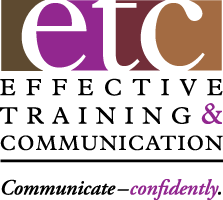Every time you send an email or text to a customer, colleague or manager, it can project your image of professionalism, competency and courtesy. That image should be positive whenever possible, or at least neutral, but never negative.
The often painful reality is that everything you write at work projects you. The following simple suggestions will help you project your best possible positive image.
Receivers
- Keep your intended reader(s) in mind when you create your written message. But remember that you don’t know who else will see it or who your intended receiver will sent it to.
- With a large distribution list, ask yourself if everyone on that list needs and wants to see this message. If not, delete them from the list.
- If you do have a long distribution list, use “bcc” instead of “cc” so the other names won’t be displayed or printed.
- Sending a message that has gone back and forth can make you look lazy or unprofessional. Either extract the pertinent information and paste it into a new note or write a separate note for the reader directly.
- Delete the “FW” in the subject line and rewrite it if you do forward a message and to be more specific and personal.
- Remove long strings of email addresses that precede the actual message.
Subject Line
- Always use a specific subject line with descriptive language, such as “12/10/21 Status of Marketing Project” to make it easier for the reader to prioritize when opening.
- Because people save some emails for future reference, messages with nondescript subject lines – or ‘No Subject’ – are difficult to sort or easily recall.
Format
- Use short sentences and paragraphs. Make it clear and easy to read and understand in a hurry.
- KISS – Keep it short and simple. Less is more in workplace writing.
- White space, bullets or sub heads make the message easier to read.
- AVOID ALL CAPS – IT LOOKS LIKE YOU’RE SHOUTING … OR LAZY.
- don’t use all lower case. it looks like you were in too big a hurry to capitalize words.
- Email was intended for quick and easy communication, much like voice mail. So, keep it simple – write single-subject brief messages.
- If an email thread goes on too long, consider a meeting, phone call or conference call as an alternative communication strategy. Email is NOT the best tool for every situation.
Tone
- Use a conversational tone with plain, simple words because email is a more casual/less formal method of communication. Even more so with texts.
- Use the receiver’s name at the beginning of the message: “Sue, here’s the agenda for the meeting … “
- Even though email is casual, avoid humor, sarcasm or slang. Such comments can be taken out of context, misinterpreted or appear unprofessional.
- You can use a “branding statement” in your signature to position your organization for external readers. Include appropriate contact information.
Attachments
- Make is easy for people to deal with your emails. Don’t attach long documents or reports unless they are absolutely necessary for the reader. Long attachments might be trashed by internal security systems.
- Don’t resend attachments when you reply unless you changed the attachment.
Replies
- Be careful when you reply to an email from a list so the reply doesn’t go to everyone on the list. Always use ‘reply to the sender’ i
- Only use “Reply All” when everyone on the list needs to see your reply.
As you’ve seen, these simple techniques for energizing your written workplace communicati0n can help you project a more positive and professional image , like the pro you want readers to think you are. Happy writing!
